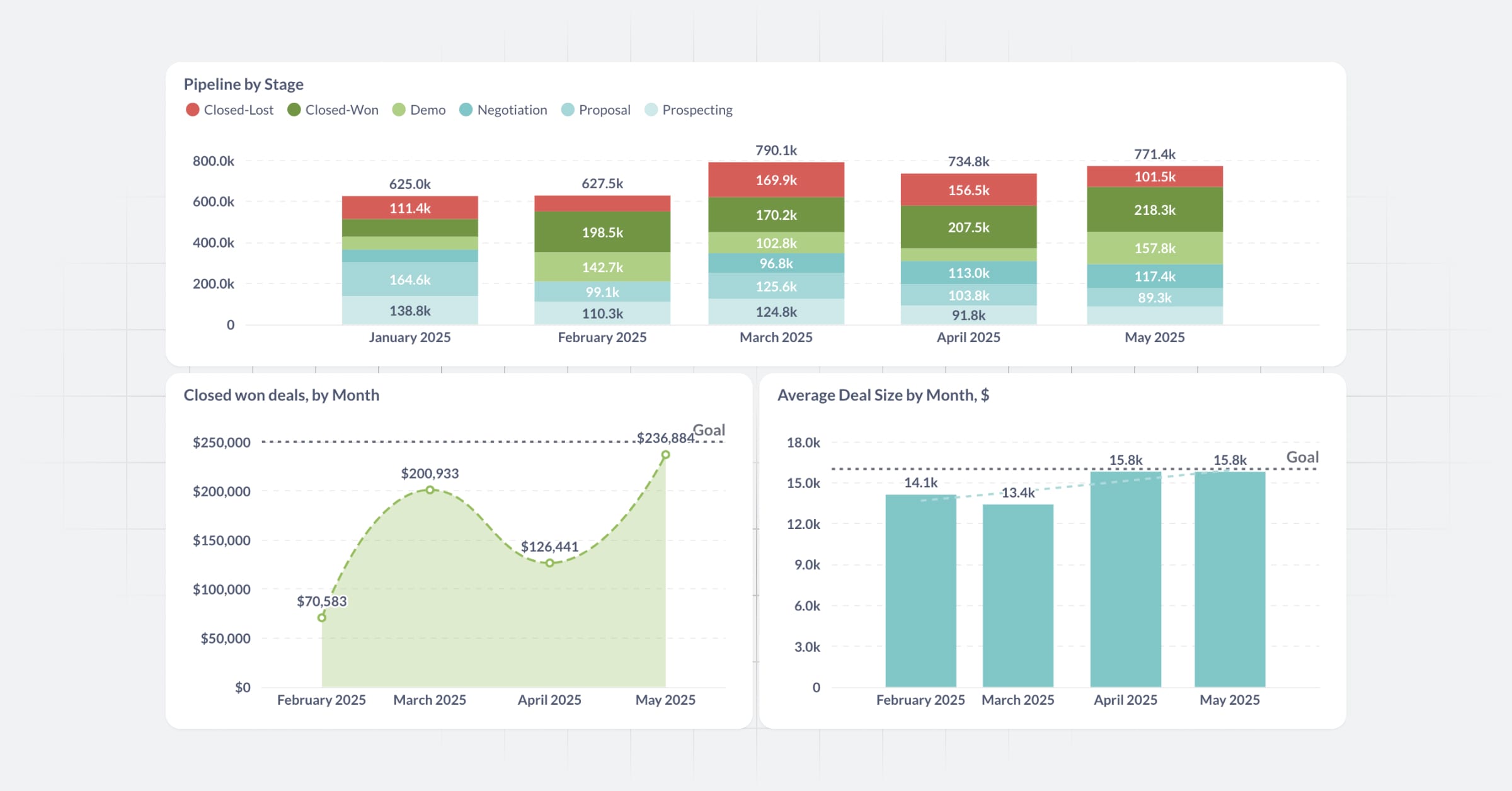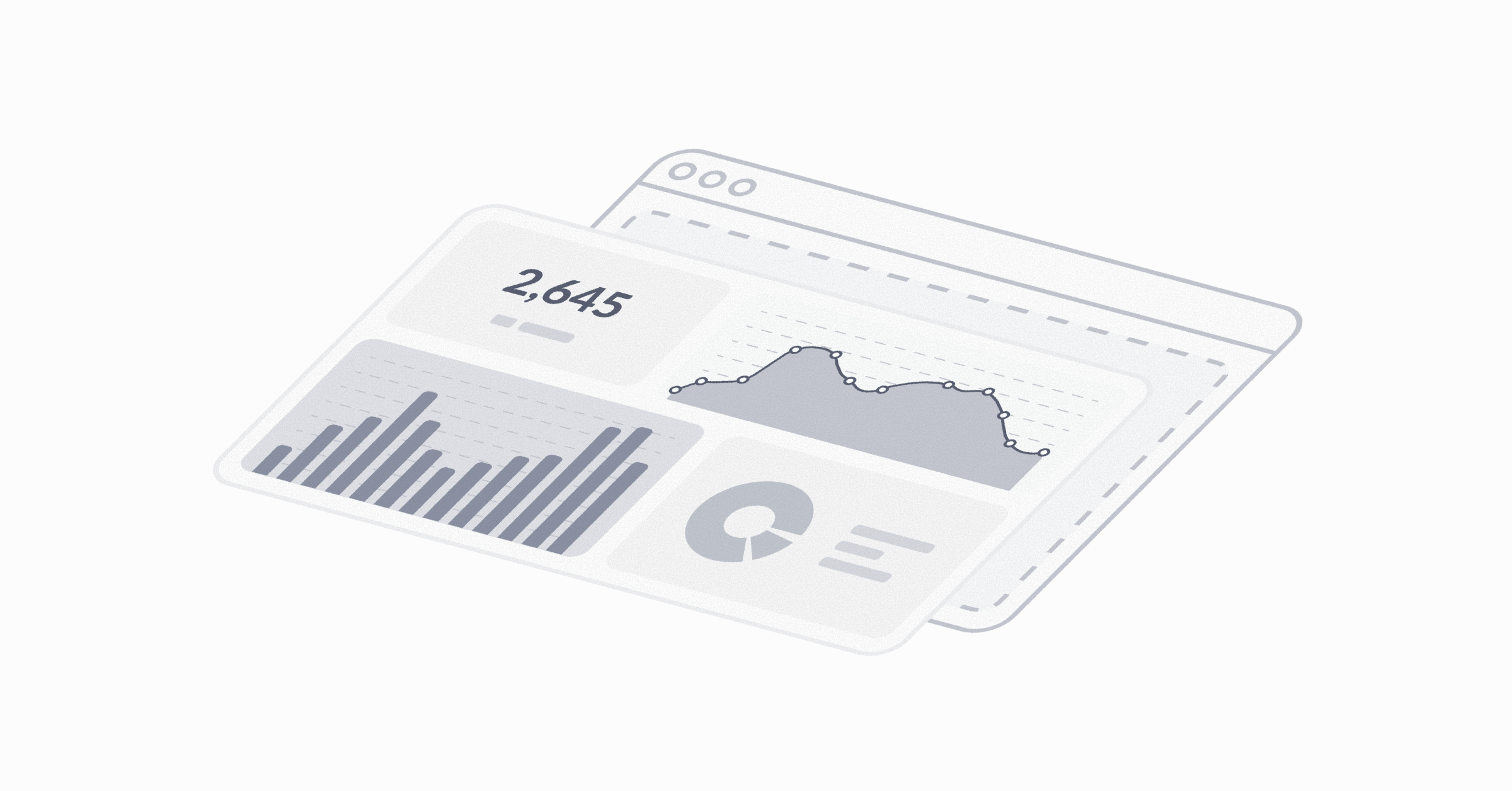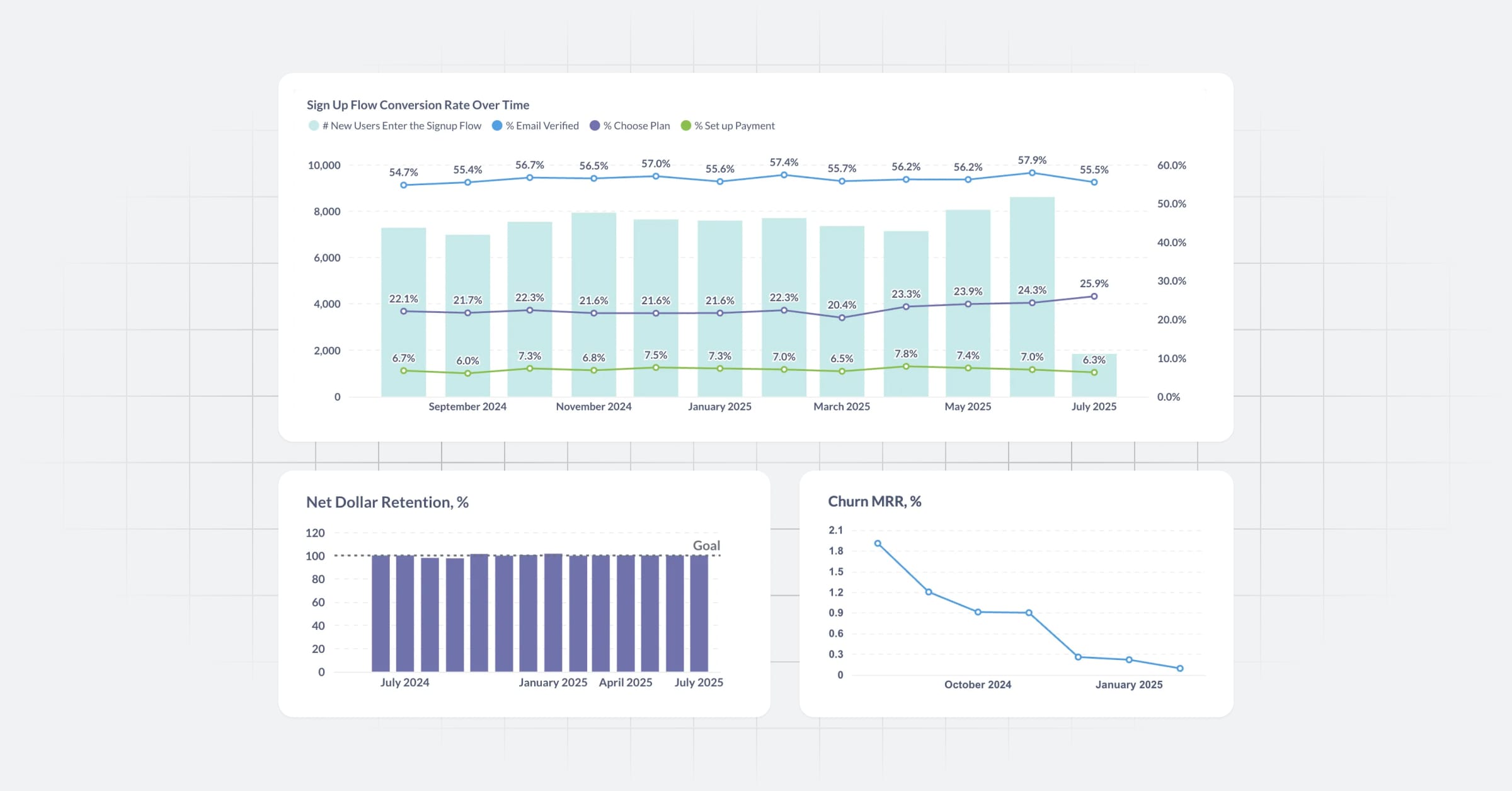‧
4 min read
How to build sales dashboards that sales teams actually use
Margaret Rimek
‧ 4 min read

Share this article
Most sales dashboards get ignored.
They’re built to look good in a QBR, not to help someone close a deal. Reps say they want dashboards-but what they really want is answers: who to call, what’s stuck, and how close they are to quota.
The truth is, a lot of sales dashboards are built by people who’ve never sold a thing. The result: performance metrics no one checks, charts no one trusts, and tools no one opens.
If you want a dashboard that gets used, start simple, build fast, and listen hard. Then iterate. Because usage beats requirements every time.
Check out a live Sales Team Dashboard built in Metabase.
Why most sales dashboards get ignored
Sales dashboards often end up as decoration: nice to look at, but ignored by the team. Here’s why:
- They report, not support: Good for QBRs, useless for day-to-day work
- Vanity metrics everywhere: Total pipeline, but no clue what’s actually moving
- They go stale: Data exports, no real-time updates
- They aren’t explorable: Reps can’t dig into their own numbers
How to build a sales dashboard team will actually use
Here’s what actually works:
- Start with real questions: What’s slowing us down? Where are deals stalling? Who needs help?
- Keep load time under 3 seconds: Speed is table stakes
- Prioritize action: If a chart doesn’t change behavior, drop it
- Build for self-service: Reps should answer their own questions without asking for help
Dashboards that help people do their job get used. Everything else is noise.
10 top metrics for a sales teams dashboard and how to calculate them
Begin with big-picture metrics to understand overall performance. Then drill down by rep or stage to spot what needs attention.
1. Pipeline by Stage
Why it matters: Shows where deals sit in the funnel and helps identify bottlenecks. In Metabase, you can drill into each stage to view the underlying deals.
How to build: Group deals by stage_name, count or sum deal_amount.
2. Closed-Won revenue
Why it matters: Tracks actual sales outcomes over time.
How to build: Filter stage = 'Closed-Won', group by closed_at month, sum deal_amount.
3. Opportunity win rate
Why it matters: Measures efficiency-how many opportunities convert into closed-won.
How to build: closed_won_count / (closed_won_count + closed_lost_count) grouped by month or rep.
4. Average Deal Size
Why it matters: Bigger deals can skew revenue-track trends and rep performance.
How to build: AVG(deal_amount) grouped by month or rep.
5. Sales cycle length
Why it matters: Helps identify delays in the funnel and forecast more accurately.
How to build: DATEDIFF(closed_at, created_at) averaged for closed-won deals.
6. Quota attainment by rep
Why it matters: Tracks individual performance vs. goal.
How to build: Join deal data with quota table, compare SUM(closed_won_amount) to target.
7. Pipeline contribution (by Source or Rep)
Why it matters: Know who or what channels are feeding your funnel.
How to build: Sum deal_amount grouped by source or rep.
8. Stage-to-stage conversion rates
Why it matters: See where deals drop off in the funnel.
How to build: Funnel chart showing count of deals at each stage transition over time.
9. Commission Forecast (Real-time)
Why it matters: This is the most viewed dashboard for many sales teams. It’s personal and drives action.
How to build: Multiply deal_amount * probability * commission_rate. Filter by rep and group by close month.
10. Next expected orders
Why it matters: Helps reps prioritize outreach by surfacing accounts likely to buy again soon.
How to build: Use expected_close_date to identify deals closing within the next 7-14 days. Optionally, base it on reorder history.
Helping your sales team adopt self-service analytics
If a dashboard requires a ticket to update, it won’t get used. Sales teams need tools they can adjust without help.
Metabase makes it easy to:
- Build without SQL using the Visual Query Builder
- Add filters for date, rep, and stage
- Click into charts to drill down to the raw data
- Set up alerts when metrics cross thresholds
Metabase helps you go from question to chart in minutes. Build once, share with the team, and let them explore.
Explore a real Sales Team Dashboard or get started with Metabase.
You might also enjoy
All posts May 15, 2025 in Analytics and BI
May 15, 2025 in Analytics and BI
What is embedded analytics?
Embedded analytics means giving your users access to charts, metrics, and reports directly inside your product, so they can explore and act on their data without needing to leave your app or rely on someone else for answers.
Alex Yarosh
‧
13 min read


